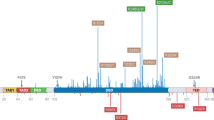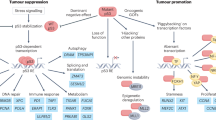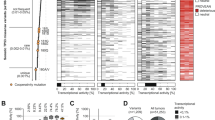Abstract
Inactivation of p53 pathway is reported in more than half of all human tumors and can be correlated to malignant development. Missense mutation in the DNA binding region of p53 is the most common mechanism of p53 inactivation in cancer cells. The resulting tumor-derived p53 variants, similar to wild-type (wt) p53, retain their ability to oligomerize via the tetramerization domain. Upon hetero-oligomerization, mutant p53 enforces a dominant negative effect over active wt-p53 in cancer cells. To overcome this barrier, we have previously designed a chimeric superactive p53 (p53-CC) with an alternative oligomerization domain capable of escaping transdominant inhibition by mutant p53 in vitro. In this report, we demonstrate the superior tumor suppressor activity of p53-CC and its ability to cause tumor regression of the MDA-MB-468 aggressive p53-dominant negative breast cancer tumor model in vivo. In addition, we illustrate the profound effects of the dominant negative effect of endogenous mutant p53 over wt-p53 in cancer cells. Finally, we investigate the underlying differential mechanisms of activity for p53-CC and wt-p53 delivered using viral-mediated gene therapy approach in the MDA-MB-468 tumor model.
This is a preview of subscription content, access via your institution
Access options
Subscribe to this journal
Receive 12 print issues and online access
$259.00 per year
only $21.58 per issue
Buy this article
- Purchase on Springer Link
- Instant access to full article PDF
Prices may be subject to local taxes which are calculated during checkout








Similar content being viewed by others
References
Gu W, Roeder RG . Activation of p53 Sequence-Specific DNA Binding by Acetylation of the p53 C-Terminal Domain. Cell 1997; 90: 595–606.
Vogelstein B, Kinzler KW . p53 function and dysfunction. Cell 1992; 70: 523–526.
Vogelstein B, Lane D, Levine AJ . Surfing the p53 network. Nature 2000; 408: 307–310.
Levine AJ, Momand J, Finlay CA . The p53 tumour suppressor gene. Nature 1991; 351: 453–456.
Moll UM, Riou G, Levine AJ . Two distinct mechanisms alter p53 in breast cancer: mutation and nuclear exclusion. Proc Natl Acad Sci USA 1992; 89: 7262–7266.
Kussie PH, Gorina S, Marechal V, Elenbaas B, Moreau J, Levine AJ et al. Structure of the MDM2 oncoprotein bound to the p53 tumor suppressor transactivation domain. Science 1996; 274: 948–953.
Okal A, Reaz S, Lim C . Cancer biology: some causes for a variety of different diseases. In: Bae YH, Mrsny RJ, Park K (eds). Cancer Targeted Drug Delivery. Springer: New York, NY, USA, 2013, pp 121–159.
Waterman MJ, Waterman JL, Halazonetis TD . An engineered four-stranded coiled coil substitutes for the tetramerization domain of wild-type p53 and alleviates transdominant inhibition by tumor-derived p53 mutants. Cancer Res 1996; 56: 158–163.
Willis A, Jung EJ, Wakefield T, Chen X . Mutant p53 exerts a dominant negative effect by preventing wild-type p53 from binding to the promoter of its target genes. Oncogene 2004; 23: 2330–2338.
Chan WM, Siu WY, Lau A, Poon RY . How many mutant p53 molecules are needed to inactivate a tetramer? Mol Cell Biol 2004; 24: 3536–3551.
Zeimet AG, Marth C . Why did p53 gene therapy fail in ovarian cancer? Lancet Oncol 2003; 4: 415–422.
Okal A, Mossalam M, Matissek KJ, Dixon AS, Moos PJ, Lim CS . A chimeric p53 evades mutant p53 transdominant inhibition in cancer cells. Mol Pharm 2013; 10: 3922–3933.
Junk DJ, Vrba L, Watts GS, Oshiro MM, Martinez JD, Futscher BW . Different mutant/wild-type p53 combinations cause a spectrum of increased invasive potential in nonmalignant immortalized human mammary epithelial cells. Neoplasia 2008; 10: 450–461.
Lim LY, Vidnovic N, Ellisen LW, Leong CO . Mutant p53 mediates survival of breast cancer cells. Br J Cancer 2009; 101: 1606–1612.
Okal A, Cornillie S, Matissek SJ, Matissek KJ, Cheatham TE 3rd, Lim CS . Re-engineered p53 chimera with enhanced homo-oligomerization that maintains tumor suppressor activity. Mol Pharm 2014; 11: 2442–2452.
Schmid I, Krall WJ, Uittenbogaart CH, Braun J, Giorgi JV . Dead cell discrimination with 7-amino-actinomycin D in combination with dual color immunofluorescence in single laser flow cytometry. Cytometry 1992; 13: 204–208.
Serrano MJ, Sanchez-Rovira P, Algarra I, Jaen A, Lozano A, Gaforio JJ . Evaluation of a gemcitabine-doxorubicin-paclitaxel combination schedule through flow cytometry assessment of apoptosis extent induced in human breast cancer cell lines. Jpn J Cancer Res 2002; 93: 559–566.
Matissek KJ, Mossalam M, Okal A, Lim CS . The DNA binding domain of p53 is sufficient to trigger a potent apoptotic response at the mitochondria. Mol Pharm 2013; 10: 3592–3602.
O'Reilly CM, Fogarty KE, Drummond RM, Tuft RA, Walsh JV Jr . Quantitative analysis of spontaneous mitochondrial depolarizations. Biophys J 2003; 85: 3350–3357.
Ricci JE, Gottlieb RA, Green DR . Caspase-mediated loss of mitochondrial function and generation of reactive oxygen species during apoptosis. J Cell Biol 2003; 160: 65–75.
Chipuk JE, Green DR . How do BCL-2 proteins induce mitochondrial outer membrane permeabilization? Trends Cell Biol 2008; 18: 157–164.
Mossalam M, Matissek KJ, Okal A, Constance JE, Lim CS . Direct induction of apoptosis using an optimal mitochondrially targeted p53. Mol Pharm 2012; 9: 1449–1458.
Slee EA, Adrain C, Martin SJ . Executioner caspase-3, -6, and -7 perform distinct, non-redundant roles during the demolition phase of apoptosis. J Biol Chem 2001; 276: 7320–7326.
Lakhani SA, Masud A, Kuida K, Porter Jr GA, Booth CJ, Mehal WZ et al. Caspases 3 and 7: key mediators of mitochondrial events of apoptosis. Science 2006; 311: 847–851.
Koopman G, Reutelingsperger CP, Kuijten GA, Keehnen RM, Pals ST, van Oers MH . Annexin V for flow cytometric detection of phosphatidylserine expression on B cells undergoing apoptosis. Blood 1994; 84: 1415–1420.
Vermes I, Haanen C, Steffens-Nakken H, Reutelingsperger C . A novel assay for apoptosis. Flow cytometric detection of phosphatidylserine expression on early apoptotic cells using fluorescein labelled Annexin V. J Immunol Methods 1995; 184: 39–51.
Metzger-Filho O, Tutt A, de Azambuja E, Saini KS, Viale G, Loi S et al. Dissecting the heterogeneity of triple-negative breast cancer. J Clin Oncol 2012; 30: 1879–1887.
Price R, Gustafson J, Greish K, Cappello J, McGill L, Ghandehari H . Comparison of silk-elastinlike protein polymer hydrogel and poloxamer in matrix-mediated gene delivery. Int J Pharm 2012; 427: 97–104.
Killion J, Radinsky R, Fidler I . Orthotopic models are necessary to predict therapy of transplantable tumors in mice. Cancer Metastasis Rev 1998; 17: 279–284.
Bibby MC . Orthotopic models of cancer for preclinical drug evaluation: advantages and disadvantages. Eur J Cancer 2004; 40: 852–857.
Vantyghem S, Allan A, Postenka C, Al-Katib W, Keeney M, Tuck A et al. A new model for lymphatic metastasis: development of a variant of the MDA-MB-468 human breast cancer cell line that aggressively metastasizes to lymph nodes. Clin Exp Metastasis 2005; 22: 351–361.
Garlich JR, De P, Dey N, Su JD, Peng X, Miller A et al. A vascular targeted pan phosphoinositide 3-kinase inhibitor prodrug, SF1126, with antitumor and antiangiogenic activity. Cancer Res 2008; 68: 206–215.
Nielsen LL, Lipari P, Dell J, Gurnani M, Hajian G . Adenovirus-mediated p53 gene therapy and paclitaxel have synergistic efficacy in models of human head and neck, ovarian, prostate, and breast cancer. Clin Cancer Res 1998; 4: 835–846.
Laptenko O, Beckerman R, Freulich E, Prives C . p53 binding to nucleosomes within the p21 promoter in vivo leads to nucleosome loss and transcriptional activation. Proc Natl Acad Sci USA 2011; 108: 10385–10390.
Tait SW, Green DR . Mitochondria and cell death: outer membrane permeabilization and beyond. Nat Rev Mol Cell Biol 2010; 11: 621–632.
Fulda S, Debatin KM . Extrinsic versus intrinsic apoptosis pathways in anticancer chemotherapy. Oncogene 2006; 25: 4798–4811.
el-Deiry WS, Harper JW, O'Connor PM, Velculescu VE, Canman CE, Jackman J et al. WAF1/CIP1 is induced in p53-mediated G1 arrest and apoptosis. Cancer Res 1994; 54: 1169–1174.
Waldman T, Kinzler KW, Vogelstein B . p21 is necessary for the p53-mediated G1 arrest in human cancer cells. Cancer Res 1995; 55: 5187–5190.
Waldman T, Zhang Y, Dillehay L, Yu J, Kinzler K, Vogelstein B et al. Cell-cycle arrest versus cell death in cancer therapy. Nat Med 1997; 3: 1034–1036.
Lane DP, Cheok CF, Lain S . p53-based cancer therapy. Cold Spring Harb Perspect Biol 2010; 2: a001222.
Wichmann C, Becker Y, Chen-Wichmann L, Vogel V, Vojtkova A, Herglotz J et al. Dimer-tetramer transition controls RUNX1/ETO leukemogenic activity. Blood 2010; 116: 603–613.
Yamada T, Hiraoka Y, Ikehata M, Kimbara K, Avner BS, Das Gupta TK et al. Apoptosis or growth arrest: Modulation of tumor suppressor p53's specificity by bacterial redox protein azurin. Proc Natl Acad Sci USA 2004; 101: 4770–4775.
Chen X, Ko LJ, Jayaraman L, Prives C . p53 levels, functional domains, and DNA damage determine the extent of the apoptotic response of tumor cells. Genes Dev 1996; 10: 2438–2451.
Mossalam M, Matissek KJ, Okal A, Constance JE, Lim CS . Direct induction of apoptosis using an optimal mitochondrially targeted p53. Mol Pharm 2012; 9: 1449–1458.
Krohn AJ, Wahlbrink T, Prehn JH . Mitochondrial depolarization is not required for neuronal apoptosis. J Neurosci 1999; 19: 7394–7404.
Salama ME, Rajan Mariappan M, Inamdar K, Tripp SR, Perkins SL . The value of CD23 expression as an additional marker in distinguishing mediastinal (thymic) large B-cell lymphoma from Hodgkin lymphoma. Int J Surg Pathol 2010; 18: 121–128.
Reaz S, Mossalam M, Okal A, Lim CS . A single mutant, A276S of p53, turns the switch to apoptosis. Mol Pharm 2013; 10: 1350–1359.
Woessner DW, Lim CS . Disrupting BCR-ABL in combination with secondary leukemia-specific pathways in CML cells leads to enhanced apoptosis and decreased proliferation. Mol Pharm 2013; 10: 270–277.
Acknowledgements
We acknowledge the use of DNA/Peptide Core and Flow Cytometry Core (NCI Cancer Center Support Grant P30 CA042014, Huntsman Cancer Institute). Research reported in this publication was supported by the National Cancer Institute of the National Institutes of Health under award number R01-CA151847. We also acknowledge support of funds in conjunction with grant P30 CA042014 awarded to Huntsman Cancer Institute. We thank Sheryl Tripp (ARUP Laboratories), Ben Bruno and Geoff Miller for scientific discussions.
Author information
Authors and Affiliations
Corresponding author
Ethics declarations
Competing interests
The authors declare no conflict of interest.
Rights and permissions
About this article
Cite this article
Okal, A., Matissek, K., Matissek, S. et al. Re-engineered p53 activates apoptosis in vivo and causes primary tumor regression in a dominant negative breast cancer xenograft model. Gene Ther 21, 903–912 (2014). https://doi.org/10.1038/gt.2014.70
Received:
Revised:
Accepted:
Published:
Issue Date:
DOI: https://doi.org/10.1038/gt.2014.70
This article is cited by
-
Narrowing the field: cancer-specific promoters for mitochondrially-targeted p53-BH3 fusion gene therapy in ovarian cancer
Journal of Ovarian Research (2019)
-
Mitochondrially targeted p53 or DBD subdomain is superior to wild type p53 in ovarian cancer cells even with strong dominant negative mutant p53
Journal of Ovarian Research (2019)



